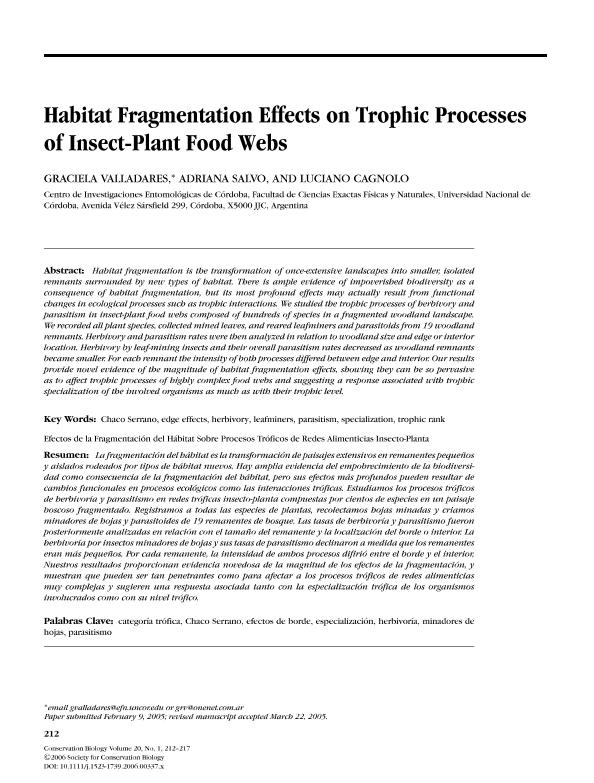Artículo
Habitat fragmentation effects on trophic processes of insect-plant food webs
Fecha de publicación:
02/2006
Editorial:
Wiley Blackwell Publishing, Inc
Revista:
Conservation Biology
ISSN:
0888-8892
e-ISSN:
1523-1739
Idioma:
Inglés
Tipo de recurso:
Artículo publicado
Clasificación temática:
Resumen
Habitat fragmentation is the transformation of once-extensive landscapes into smaller, isolated remnants surrounded by new types of habitat. There is ample evidence of impoverished biodiversity as a consequence of habitat fragmentation, but its most profound effects may actually result from functional changes in ecological processes such as trophic interactions. We studied the trophic processes of herbivory and parasitism in insect-plant food webs composed of hundreds of species in a fragmented woodland landscape. We recorded all plant species, collected mined leaves, and reared leafminers and parasitoids from 19 woodland remnants. Herbivory and parasitism rates were then analyzed in relation to woodland size and edge or interior location. Herbivory by leaf-mining insects and their overall parasitism rates decreased as woodland remnants became smaller. For each remnant, the intensity of both processes differed between edge and interior. Our results provide novel evidence of the magnitude of habitat fragmentation effects, showing they can be so pervasive as to affect trophic processes of highly complex food webs and suggesting a response associated with trophic specialization of the involved organisms as much as with their trophic level.
Archivos asociados
Licencia
Identificadores
Colecciones
Articulos(CCT - CORDOBA)
Articulos de CTRO.CIENTIFICO TECNOL.CONICET - CORDOBA
Articulos de CTRO.CIENTIFICO TECNOL.CONICET - CORDOBA
Articulos(IMBIV)
Articulos de INST.MULTIDISCIPL.DE BIOLOGIA VEGETAL (P)
Articulos de INST.MULTIDISCIPL.DE BIOLOGIA VEGETAL (P)
Citación
Valladares, Graciela Rosa; Salvo, Silvia Adriana; Cagnolo, Luciano; Habitat fragmentation effects on trophic processes of insect-plant food webs; Wiley Blackwell Publishing, Inc; Conservation Biology; 20; 1; 2-2006; 212-217
Compartir
Altmétricas




